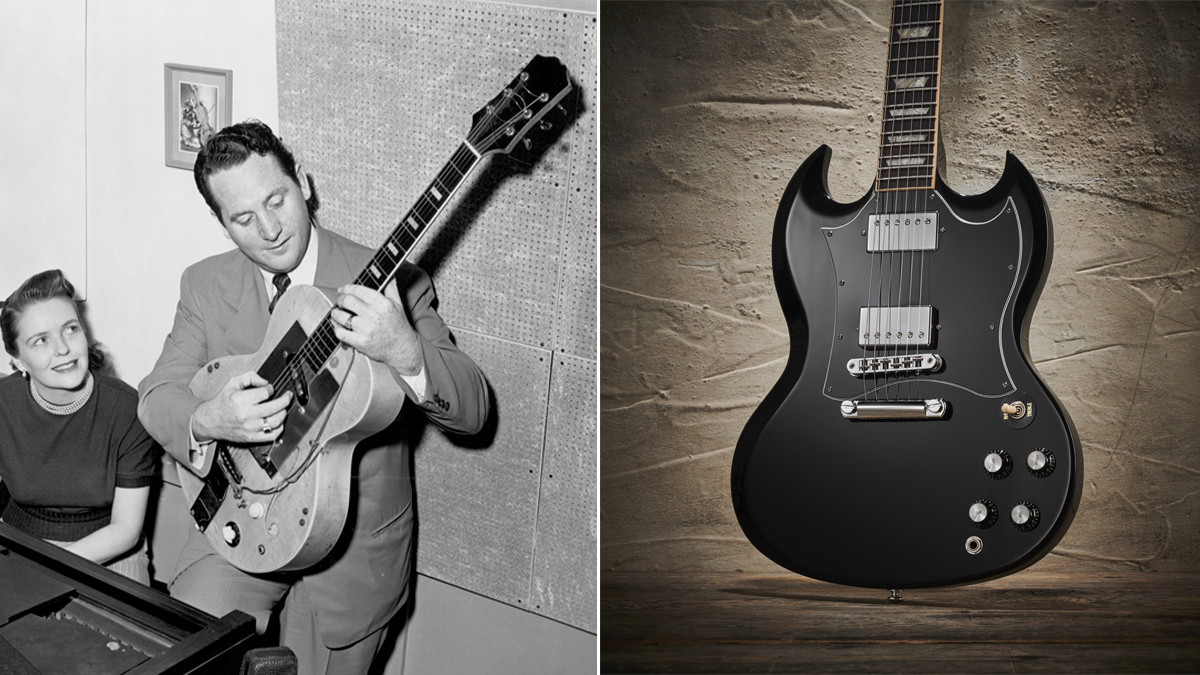
It’s a well-known piece of guitar history that, after the Les Paul electric guitar emerged as a powerhouse in modern music in the late 1950s, the first-ever SG models soon followed suit, and were initially released by Gibson in 1961 with the Les Paul name attached.
However, much to his relief, Paul’s name was promptly removed from the headstocks of the new instruments – after his endorsement contract expired in 1962 – with his own animosity for the two-horned, radical-looking axe becoming a well-known piece of Gibson lore.
Though many have since speculated that such disapproval resulted from a dislike for the aesthetics, Paul’s longtime guitar tech Tom Doyle recently sat down with Guitarist magazine to shed some light on the story and discuss the real reasons behind Les’s ultimate aversion for the SG.
And, according to Doyle, said reasons are far more concerned with the functionality, usability and tonal performance of the guitar, rather than the appearance. Unsurprising, really, given Paul's penchant for design.
“He didn’t like it in the sense that the neck was very movable when you played,” revealed Doyle. “He had a lot of strength in his hands. And with an SG you can actually create vibrato with the neck moving back and forth, with the original neck tenon they had on it.
That’s not to say there weren’t aspects of the SG that won Paul over, despite his lack of enthusiasm for the neck movement. In fact, the double-cutaway design was actually something that impressed him.
“He loved the fact it had a very fast neck, no question about it,” he continued. “He could reach even further up the neck than on a regular Les Paul, too.
All the latest guitar news, interviews, lessons, reviews, deals and more, direct to your inbox!
“You just couldn’t get the same kind of sound, resonance-wise because it was not the thickness of a Les Paul body and also it didn’t have a maple cap on it like his Goldtop. But, at first, he thought, ‘Well, we’ve got to go with it because these changes are for reasons of economics and because people want a lighter guitar.'”
Of course, Les Paul himself has spoken about the reasons behind his initial dislike for the SG before, during an appearance on the 2016 guitar documentary, Turn It Up!
Paul said, “The problem that the SG had was the fact that you could pull back on the neck, and it wasn’t strong enough.
“I don’t want no vibrato by bending on the neck. I want a good solid instrument, and it didn’t sustain as good. Otherwise, it’s a good instrument.”

Matt is the GuitarWorld.com News Editor, and has been writing and editing for the site for five years. He has a Masters in the guitar, a degree in history, and has spent the last 19 years playing everything from blues and jazz to indie and pop. During his GW career, he’s interviewed Peter Frampton, Zakk Wylde, Tosin Abasi, Matteo Mancuso and more, and has profiled the CEOs of Guitar Center and Fender.
When he’s not combining his passion for writing and music during his day job, Matt performs with indie rock duo Esme Emerson, and has previously opened for the likes of Ed Sheeran, Keane, Japanese House and Good Neighbours.
